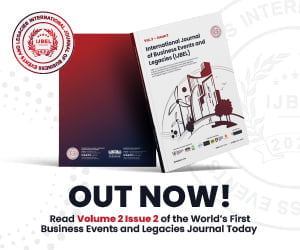Actual Time of Arrival
What is the Actual Time of Arrival?
The Actual Time of Arrival (ATA) refers to the precise time at which a vehicle, such as an airplane, ship, train, or bus, reaches its destination.
Unlike its counterpart, the Estimated Time of Arrival (ETA), which provides an approximate arrival time, ATA pinpoints the exact minute of arrival, offering a clear end to the travel narrative.
This metric is vital for various stakeholders in the travel industry, including passengers, cargo handlers, and travel coordinators, providing them with accurate and essential data for planning and operations.
The Importance of Actual Time of Arrival in Travel Logistics
For Passengers
For travelers, ATA is crucial for coordinating ground transportation, scheduling connecting flights, and informing loved ones about their arrival.
For Operators
For operators, it helps in managing schedules, ensuring quick turnovers, and maintaining service reliability.
Calculating Actual Time of Arrival in Different Modes of Travel
Aviation
In aviation, ATA is recorded when the aircraft’s wheels touch down on the runway and arrives at the gate.
Maritime
For maritime travel, it’s marked when the ship is securely moored at the dock.
Ground Transportation
In ground transportation, ATA is noted when the vehicle arrives at the final stop or station.
The Role of Technology in Tracking Actual Time of Arrival
Technological advancements, including GPS and mobile applications, have revolutionized how ATAs are tracked and communicated, enhancing transparency and efficiency.
Advanced technologies have revolutionized how ATAs are monitored, reported, and utilized, offering unprecedented accuracy and efficiency. Here’s a deeper look into the technological advancements that have transformed ATA tracking:
1. GPS Technology
Global Positioning System (GPS) technology is at the heart of tracking movements in real-time. GPS devices installed in vehicles, aircraft, and vessels allow for the continuous monitoring of their exact location. This capability enables operators and logistics managers to calculate the ATA with high precision by analyzing the current position, speed, and route of the vehicle. For passengers, this means getting accurate updates on the arrival times of flights, trains, buses, or ships.
2. Telematics Systems
Telematics combines GPS technology with onboard diagnostics to provide real-time data on vehicle performance, route adherence, and environmental conditions affecting travel. This detailed insight helps in predicting ATAs more accurately by accounting for variables like traffic congestion, weather conditions, and vehicle speed. Telematics systems are particularly useful in fleet management and cargo shipping, where precise timing can significantly impact operational efficiency.
3. Mobile Applications
Mobile apps have become indispensable tools for travelers, providing real-time information on the go. Airlines, railway companies, and transit agencies have developed apps that offer live updates on ATAs, gate changes, and delays. These applications often integrate GPS and telematics data, giving passengers up-to-the-minute information and helping them plan their journeys more effectively.
4. Machine Learning and Predictive Analytics
Machine learning algorithms analyze historical and real-time data to predict ATAs with increasing accuracy. By examining patterns in traffic flow, weather conditions, and historical performance of specific routes, these systems can forecast potential delays and adjust ATAs accordingly. Predictive analytics can significantly enhance the reliability of ATA predictions, enabling better planning and resource allocation.
5. Blockchain Technology
Blockchain technology, though in its nascent stages of application in the travel industry, offers promising prospects for tracking ATA. By providing a secure and immutable ledger of transactions, blockchain can facilitate the real-time sharing of ATA-related data among various stakeholders, such as airlines, airports, ground transportation providers, and passengers. This shared data ecosystem can improve transparency, reduce discrepancies in ATA reporting, and enhance coordination among different entities involved in the travel process.
6. Internet of Things (IoT)
IoT technology connects physical objects to the internet, allowing them to send and receive data. In the context of ATA tracking, IoT devices can offer granular insights into a vehicle’s location, environmental conditions, and even the status of cargo. For passenger travel, IoT can enhance personalization, providing individual updates and accommodations based on the precise timing of arrivals.
These technologies collectively play a crucial role in improving the accuracy, reliability, and utility of ATA tracking. They not only benefit operators and logistics managers by optimizing operations and reducing delays but also enhance the travel experience for passengers through timely and accurate information.
Challenges in Accurately Predicting Actual Time of Arrival
Factors such as weather, traffic, and operational issues can affect the accuracy of ATA, presenting challenges in real-time tracking and updates.
Here’s a closer look at some of the primary challenges in accurately predicting ATA:
1. Weather Conditions
Weather is one of the most unpredictable and impactful factors affecting travel, particularly for aviation and maritime transportation. Storms, fog, high winds, and other adverse weather conditions can delay departures, slow down travel, or necessitate route changes. Even with advanced meteorological forecasting tools, sudden weather changes can significantly affect ATA accuracy.
2. Traffic Congestion
For ground transportation, including buses, trains, and cars, traffic congestion is a major hurdle in predicting ATA. Traffic jams, road construction, accidents, and detours can cause unexpected delays. While GPS and real-time traffic monitoring technologies help in adjusting predictions, rapidly changing traffic conditions pose a constant challenge.
3. Technical Issues and Maintenance
Vehicles of all types are susceptible to technical issues and maintenance needs that can arise unexpectedly. Mechanical failures, necessary repairs, or preventive maintenance can delay departures or necessitate slower travel speeds, affecting the ATA. Even with rigorous maintenance schedules and monitoring systems, unforeseen technical problems can disrupt the best-laid plans.
4. Operational Constraints
Operational constraints within airports, ports, and railway stations, such as availability of docks, gates, or tracks, and ground handling delays, also impact the accuracy of ATA predictions. These constraints can be due to high traffic volumes, limited resources, or logistical challenges in coordinating multiple arrivals and departures.
5. Regulatory and Security Procedures
Stringent regulatory and security procedures can introduce delays in transportation. Customs clearances, security checks, and adherence to new regulations can extend the time needed for processing passengers and cargo, particularly in international travel. While necessary for safety and security, these procedures can vary significantly in duration, complicating ATA predictions.
6. Human Factors
Human factors, including decisions made by pilots, drivers, or captains, and actions of ground staff and air traffic controllers, influence ATA. Decisions made in response to unexpected situations, such as rerouting due to weather or responding to passenger needs, play a crucial role in determining the actual arrival time.
7. Communication and Coordination
Effective communication and coordination among various stakeholders involved in the travel process are essential for accurate ATA predictions. Miscommunication, delays in relaying information, or coordination failures among airlines, airports, ground transportation providers, and regulatory bodies can lead to inaccuracies in predicting and reporting ATA.
Despite these challenges, advancements in technology and data analytics are helping to mitigate the impact of these factors on ATA predictions. Real-time tracking, machine learning algorithms for predictive analytics, and better communication systems are gradually improving the accuracy of ATA estimations, providing passengers and operators with more reliable information for planning and decision-making. Nonetheless, the inherently unpredictable nature of many of these challenges means that achieving perfect accuracy in ATA predictions remains a complex and ongoing endeavor.
Previous Term: Accessible Travel
Next Term: Add-on
A | B | C | D | E | F | G | H | I | J | K | L | M | N | O | P | Q | R | S | T | U | V | W | Y | Z



